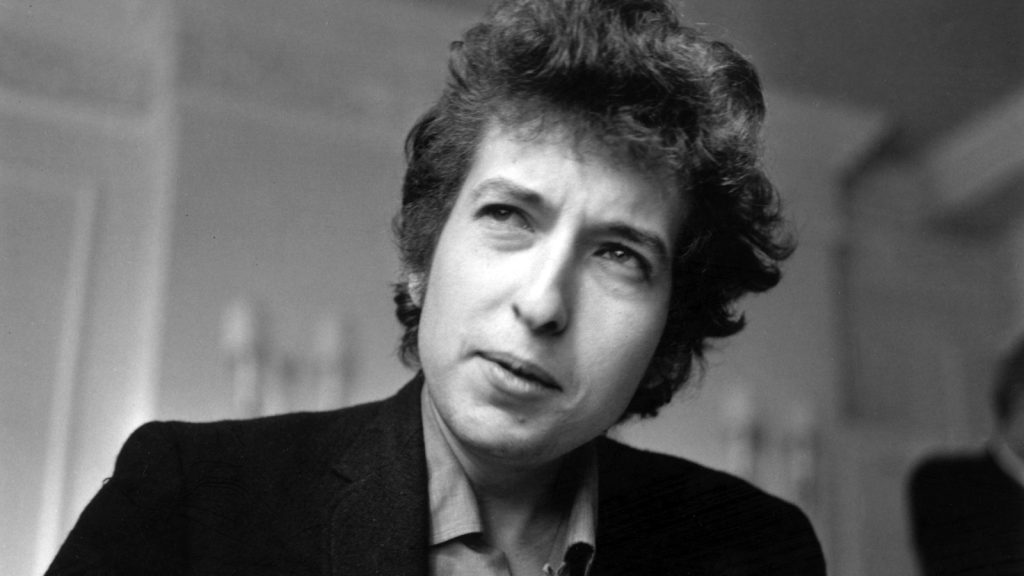Rolling Stone named Beyoncé’s “Formation” the greatest music video of all time in 2021. But when it comes to the most influential, first place can arguably go to a clip that isn’t even a proper music video — and was shot in black & white 60 years ago.
Last week, Margo Price released a jaunty new single, “Don’t Wake Me Up,” accompanied by a video in which she holds up white cards with snippets of lyrics — among them, “cow pasture cemetery,” “honky tonk leaky tent,” “dive bar,” “madness” — as the song plays. It didn’t take a classic-rock historian to see the video as a nod to Bob Dylan’s “Subterranean Homesick Blues,” the canonical footage of the young Bob of 1965 in a London alleyway holding, and discarding, cards with bits of the tune’s lyrics; in the background is poet Allen Ginsberg talking to off-screen Dylan pal Bobby Neuwirth.
Not an actual music video, the scene was the opener of documentarian D.A. Pennebaker’s penetrating 1967 film Dont Look Back, shot during Dylan’s U.K. tour of two years before. As Pennebaker later said, the concept came from Dylan himself: “He said, ‘I’ve got this idea for a film where I take a whole lot of sheets of paper and write lyrics for a song, and hold them up as the lyrics come up in the song and then I just toss them away.’ And I said, ‘That’s a fantastic idea.’ So we brought along about 50 shirt cardboards.”
The footage was shot in the alley behind the Savoy Hotel in London, and according to Pennebaker (who died in 2019), some of the handwritten lyrics were supplied by Joan Baez and Donovan, who were both in Dylan’s vicinity (and crosshairs) at the time.
Once the MTV era began, the sequence, relatively primitive as it was, was seen as a music video prototype and began to inspire knockoffs and tributes. “When Margo approached me with the concept, I did a deep dive on groups who’d done similar projects with poster cards or cue cards and was shocked to see how many there were,” says Hannah Gray Hall, who directed Price’s “Don’t Wake Me Up.” “It’s like keeping a tradition going.”
The first may have been “Misfit,” the 1986 video by the stylish British pop band Curiosity Killed the Cat, which featured Andy Warhol dropping white cards during a brief cameo.
The following year, INXS’ “Mediate” elevated the Dylan homage to another level. Starting with singer Michael Hutchence, all the band members held up and subsequently dropped lyric cards in sequence. “You had to get the timing right,” INXS’ Andrew Farriss tells Rolling Stone of filming outside of Sydney in the band’s home country of Australia. “You had to make sure the cards landed.” In another salute to the Dylan video, some of the words on the cards were intentionally misspelled.
In a sign that not everything was instantly available on YouTube in 1987 (of course, YouTube was yet to exist), Farriss says he wasn’t aware of the source material at the time. “I’m not sure if it was the director’s idea or Michael’s, but I have to admit that I didn’t even know Bob had a video like that,” he says. “Maybe some of the other guys did. All I know is that it sounded like a good idea. I saw [the original] later and went, ‘Oh, wow.’” The recreation was so obvious that one critic at the time noted that “both the filmmaker [Pennebaker] and his subject [Dylan] ought to round up the lawyers,” but that didn’t prevent the song from winning Video of the Year at the 1988 MTV Music Video Awards, in conjunction with the band’s companion clip for “Need You Tonight.”
Since then, a cottage industry of “Subterranean Homesick Blues” videos has risen up, each honoring the original in different ways. As with Curiosity Killed the Cat, some approached their remakes as parodies. “Weird Al” Yankovic’s “Bob,” in 2003, found everyone’s favorite satirical hero with a Dylan wig, vest, and alleyway of his own, a pretend Ginsberg behind him, as Yankovic tweaked Dylan’s surrealistic imagery (“Rise to vote, sir/Do geese see God/Do nine men interpret/Nine men, I nod”).
Even though “Subterranean Homesick Blues” isn’t one of Dylan’s topical songs, others have used the setup for protest shots of their own. Les Claypool and the Frog Brigade’s “Buzzards of Green Hill” has typically carnivalesque Claypool lyrics, which could be about the perils of drunken driving, hence Claypool’s use of cue cards in the song’s video.
Earlier this year, Kim Gordon redid the packing-list lyrics of “Bye Bye” into a minimalist anti-Trump protest song, “Bye Bye 25!,” complete with a video with Gordon holding cards with the new lyrics (“immigrant,” “hate,” “injustice”). Artist Ed Ruscha has a Sonic Youth connection of his own (the band named its song “Brave Men Run” after one of his paintings) and a Dylan one too: In 2012, his offered up a lyric-card homage, honoring friend and conceptual artist Lawrence Weiner with snippets of Weiner’s own words.
Wir sind Helden’s 2005 video “Nur ein Wort” (“Just One Word”) featured the now-defunct German pop band in their own alley, dancing and cavorting as they flashed their lyric sheets. (Since the song is about encouraging a private person to express themselves — “your silence is your tent” — the use of words in the video made conceptual sense.) And before he was slaying zombies, Andrew Lincoln was wooing Keira Knightley in Love Actually with, yep, words on white cards.
In the case of Price’s video, director Hall says Price’s team approached her about doing something similar to Dylan, “but they said to make it my own and do a contemporary take on it.” Using 77 different poster-board cards for her shoot, Hall thinks those lyric snippets also connect to the song’s theme and to Dylan’s own legacy: “Margo and I didn’t talk about it in depth, but to me, it speaks very heavily to our current social climate and people being isolated in their own ways and not looking into other people’s opinions. It’s more social commentary than protest song.”
For Farriss, one thing unites nearly 40 years of “Subterranean Homesick Blues” homages. “It’s simple,” he says. “Just because something’s complicated doesn’t mean it’s necessarily good.”

